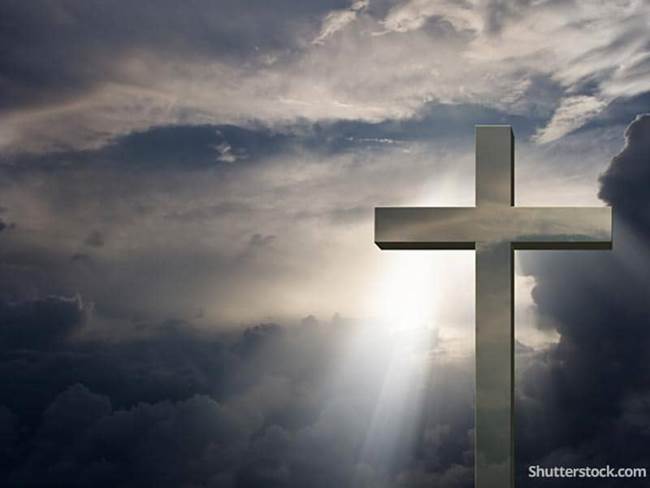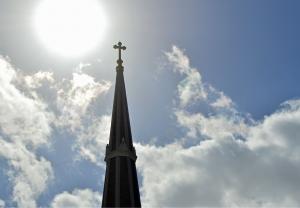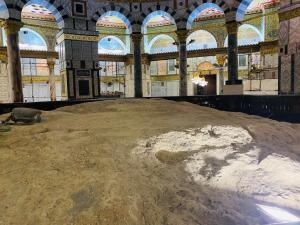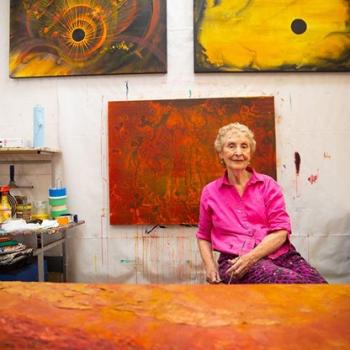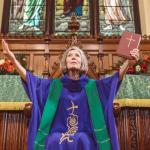By Laurie L. Patton, Duke University
In December, the group of Jewish women activists arguing for women’s rights to pray near Jerusalem’s Western wall in full religious regalia, using tallit (prayer shawl) and tefillin (phylactery), faced yet another setback. It is now against the law for women even to bring tallit and tefillin near the Wall. Women are regularly stopped by the police and asked not to enter if they possess those items. Yet Women of the Wall continue to push against these increasing restrictions, confronting both Rabbinical authorities and a special police force established to protect the Wall, at one and the same moment.
Their history is a dramatic one. In 1988, after a feminist conference, women decided to take the Torah scroll and pray at the Western Wall and to return to do so every Rosh Hodesh, or first day of the new month. In 2003, the Israeli High Court, in reversal of an earlier decision, issued a ban on women praying at the wall as a disruption of public order. A small part of the wall, called Robinson’s Arch, was designated as a place for them to worship with tallit and tefillin.
Yet Women at the Wall continued to come to pray outside of Robinson’s Arch, and many have been arrested. Most of the women are released after signing a document saying they will not come back to the Western Wall for a time. Earlier in the fall, one woman refused to sign this document, and was arrested, thrown into jail, strip searched and mishandled in prison. A large international protest ensued, in which many women underscored the deepening divide between the Jewish Orthodox rule over Israel and the liberal Judaism of America, where for many decades women have been allowed to pray with full regalia, and have been able to be ordained as rabbis.
The Broader Landscape
While the controversy sparked by the activists of Women of the Wall is and should continue to be understood as a Jewish issue, the debate takes shape within a larger landscape in women’s religious history, a landscape unlike any other in human history. Religious communities are claiming women’s leadership in unprecedented numbers, and in this the Women of the Wall share a great deal with other religious traditions.
While many key decisions about women’s leadership began to be made in the 1970’s, the watershed years for many congregations and religious groups were in the mid-80’s to late 90’s. During that time many congregations made decisions to ordain women. In 1985, women in the Scottish Episcopal church could serve as deacons. In 1988, an American woman, Jetsunma Akhon Lhamo, became the first woman to be understood as an incarnate lama in Buddhism. That same year, women were ordained in the Evangelical Lutheran Church in Finland, and the Episcopal Church in the United States named Barbara Harris as its first female bishop. Australia began ordaining Anglican priests in 1992, and the Church of England and the Anglican Church of South Africa followed suit later that year. In 1994, the first female Hindu priest, Indrani Rampersad, was ordained in Trinidad. That same year, American-born Amina Wadud gave the jum’ah khutbah, or Friday sermon, at a Cape Town mosque, the first woman in South Africa to do so. In 1996, in Sarnath, India, ten Sri Lankan women were able to become ordained as bhikkhunis, or fully ordained nuns, through the activism of Sakyadhita, an International Buddhist Women Association. (Two years later, Sri Lanka again began to ordain women as fully ordained Buddhist nuns after a 900-year gap.) That same year (1996), Australia’s Diamond Sangha Buddhist community ordained Subhana Barzagi Roshi as the Diamond Sangha’s first female roshi (Zen teacher). Throughout the late nineties and into the 2000’s, women priests’ ordination in Anglican and Protestant denominations occurred in Japan, Africa, and Eastern Europe.
The 80’s and 90’s were no different for Judaism. While Reform and Reconstructionist groups began to ordain female rabbis in the 1970’s, in 1985, the more centrist Conservative Judaism decided to admit women as rabbis. The first female rabbi, Amy Eilberg, was ordained that same year. The mid-90’s also saw the advent of the first non-Orthodox female rabbis in Israel, although they were not recognized as such by the Israel Chief Rabbinate authorities. In addition, women began to be acknowledged as lay leaders in Jewish Orthodox congregations. The job of “congregational intern” emerged, a niche filled frequently by learned Orthodox women. Many of their duties include rabbinical ones, such as teaching and acting as a resource on matters of halakhah, or Jewish law.
Western “Liberals” in International Debates
These decisions about women in religious communities had two different results. The first was a deepening of the split between conservative groups and liberal groups. The Episcopal Church in America is perhaps the most famous example. The church is now severed into two—those who are committed to the ordination of women and homosexuals, and those who oppose the ordination of both groups. Similar rifts in the Presbyterian, Methodist, and Baptist churches have taken place in the 1990’s and early 2000’s. In Thailand, many groups now support the ordination of Buddhist nuns, but the mainstream orthodox Theravada tradition in Thailand still does not recognize the right of women to be ordained as leaders. While women domestic priests, called purohits, are increasing in certain parts of India, and also in the West, many Hindu groups still prefer an eldest son to perform the last rites of a deceased loved one.
What is more, there has usually been an international dimension in these debates about women’s leadership. These arguments tend to involve a catalyzing liberal force that frequently, though not always, includes an interaction between Western and non-Western perspectives.
While there are strong feminist leaders and longstanding reform traditions in non-Western countries, the public elements of the debate often revolve around the question of “Western” and even at times “American” influence. In the world-wide Anglican Communion, for example, the American and British churches are frequently pitted against the African churches, and those who have remained solidly opposed to the ordination of women in America are now making common cause with churches in Africa. In the case of the ordination of Theravada nuns, the role of Sakyadhita, an international organization that involved alliances between Western and Asian women, was held up as the model. The question of the full ordination of women in Tibetan Buddhism was no different. In Zurich during a 2005 conference of Tibetan Buddhist Centers, the Dalai Lama spoke of the full ordination of nuns in the following way:
Now I think the time has come; we should start a working group or committee to meet with monks from other Buddhist traditions…I prefer that Western Buddhist nuns carry out this work…Go to different places for further research and discuss with senior monks (from various Buddhist countries). I think, first, senior bhikshunis need to correct the monks’ way of thinking.
Many leaders of the movement to give women more leadership roles in Islam are marked in public discourse as American or Western European; the first woman-led prayer service was held in New York City in 2006 and the press noted that it was predominantly attended by American women and men. In the Catholic Church, the feminist movements, and pro-ordination advocates, are particularly concentrated in America and Western Europe, and seen as a problem precisely because they are in these more Westernized, liberal cultures.
The split between liberal Jewish diaspora and Orthodox Israeli groups over the religious activity of women should be seen in this larger light. The role and status of women in the public sphere in Israel is one fraught with vehemence and driven by the issue of the rights of the ultra-Orthodox, a religious minority in Israel, to enforce practices of modesty when it comes to the appearance of women in public. It is also driven by the Orthodox rabbinate’s control of the observance of religious law, whether it is rulings on who is considered a legitimate Jew or what is considered a legitimate congregation. In these ways the Israeli rabbinate is deeply severed from much of the American Jewish diaspora, whose transformations in the last three decades involved a clear acceptance of women in all forms of leadership roles, and all forms of religious observance traditionally understood as an obligation for men.
In addition, despite the presence of many feminist Orthodox Jewish thinkers in Israel, the discussion in Israel tends to focus on the idea that Women of the Wall as an “import from abroad.” The movement is understood as pernicious from an Orthodox Jewish point of view, and simply crazy and irrelevant from a secular point of view. Women of the Wall is motivated by egalitarian goals, which are deeply familiar to the practice and engagement of American Jews, but less so to the Sephardic, Eastern European, and Slavic cultures that make up so much of Israeli society. Anat Hoffman, leader of Women at the Wall, has a snappy rejoinder to this critique of the “outsider” influence. “Many of Israel’s best inventions were imports. For example: Zionism.” (NYT, December 22, 202)
Ambiguous Radicals Within
The second result of these larger debates about women in religious traditions is a radicalization of a certain sub-group of the orthodox elements within them. These movements emphasize unbroken tradition and ancient precedent of women leaders, but their actions are usually not recognized, or only ambivalently acknowledged, by the orthodox establishments. The presence of such women in a tradition’s early history may or may not have persuasive power in the more orthodox communities of that religious tradition. In the more liberal mainstream Protestantism, many of the early proponents of women’s ordination pointed to the presence of women leaders in the early years of the church in Palestine. While such arguments were persuasive in liberal circles, they have fallen on deaf ears in the more conservative leaders of the Protestant churches. Muslim women activists today point out the presence of at least one woman teacher in the early years of Islam, even though their role as leaders in congregations is only beginning to be acknowledged.
In the Roman Catholic church, the organization WomenPriests also called upon this unbroken tradition when it was founded in 2002. At that time, contrary to Roman Catholic law, seven women were ordained as priests on the banks of the Danube river. Ordinations continue today in a variety of western countries—more than twenty American states and Canada—even though they are not recognized by the Roman Catholic Church. Several of the women claim that they were made bishops by a mainstream European bishop whose identity remains undisclosed. If their claim is true, then these women are indeed in the line of apostolic succession.
Thubten Chodron is an American Tibetan Buddhist nun who has argued for the full ordination of women in the Tibetan tradition, which would enable them to become geshes, or learned spiritual masters. She too argues that the question is one of continuity of tradition. As a student of the Dalai Lama’s and other Tibetan teachers, she states that the full ordination of women is not a feminist issue; rather it is about the spread and preservation of the dharma, or Buddhist teachings. She writes,
Now as a bhikshuni, I am a full member of the sangha and must assume responsibility for the continuation of the monastic tradition and the existence of the Dharma in our world. Instead of simply relying on others to preserve the Dharma as I’d done in the past, I now have to contribute to this virtuous wave so that future generations may enjoy the precious Dharma and Vinaya. I am grateful for the opportunity to have received this ordination and to the lineages of monastics who preserved it over the centuries. Through our efforts, may all sentient beings throughout infinite space benefit! (Source)
The Jewish debates about women are no different in their appeal to tradition, albeit with ambiguous results. In 2006, Haviva Ner David was given ordination by an Orthodox Yeshiva in Jerusalem, and is technically the first female Orthodox rabbi. In the dance of institutional legitimacy, however, she refuses the title rabbi and the man who signed her ordination papers, Rabbi Strikovsky, does not call her rabbi either. Yet she and others like her call upon the ancient Jewish tradition of teaching and preaching and consultation on matters of the law to place her within an unbroken lineage.
So, too, the Women of the Wall understand themselves in this light. The prayer that they chant, written by Rahel Sharon Jaskow, explicitly calls upon the foremothers Sara, Rivka, Rahel, and Leah, as do most liberal siddurim, or Jewish prayer books:
May it be Your will, our God and God of our mothers and fathers, to bless this prayer group and all who pray within it: them, their families and all that is theirs, together with all the women and girls of your people Israel. Strengthen us and direct our hearts to serve You in truth, reverence and love. May our prayer be desirable and acceptable to You like the prayers of our holy mothers, Sarah, Rivka, Rahel and Leah. May our song ascend to Your Glorious Throne in holiness and purity, like the songs of Miriam the Prophet, Devorah the Judge, and Hannah in Shilo, and may it be pleasing to you as a sweet savor and fine incense.
Part of a Global Sea-Change, with One Key Distinction
When viewed from the comparative perspective, Women of the Wall are indeed part of a global trend and an unprecedented moment in women’s religious history worldwide. They are the liberals inserting themselves in international debates. They are the ones insisting that the unbroken tradition of Judaism includes them. Their confidence to continue might be taken from the fact that their sisters in many countries are fighting battles with remarkably similar dimensions. They should take solace from the longer view that they are part of a deep, global trend.
The comparative perspective reveals poignant differences as well as heartening similarities. Many (though by no means all) of the progress in women’s leadership in other religious traditions took place outside of state control. But the case of the Women of the Wall reveals a tough reality: women who protest in states where religious norms are enforced both by the religion and by the state are in a particularly pernicious double bind. Unlike many of their religious counterparts, Jewish women must tussle with religious authorities in Jewish communities world-wide and with state authorities in Israel. Their consolation comes from the solidarity with other religious traditions. Their disconsolation comes from the fact that, when they bring their tallit to the Western wall, they face angry rabbis and forbidding policemen at one and the same time.
Laurie L. Patton, Professor of Religion, Duke University



